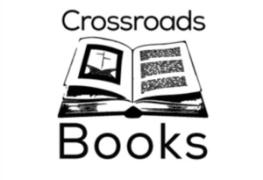Siglio to Publish the First Complete Edition of John Cage’s <i>Diary</i>
Composed over the course of sixteen years, John Cage’s Diary: How to Improve the World (You Will Only Make Matters Worse) is one of his most prescient and personal works. A repository of observations, anecdotes, proclivities, obsessions, jokes and koan-like stories, Diary registers Cage’s assessment of the times in which he lived as well as his often uncanny portents about the world we live in now.
With a great sense of play as well as purpose, Cage traverses vast territory, from the domestic minutiae of everyday life to ideas about how to feed the world. He contemplates the consequences of both unbridled capitalism and an infinite field of information. He excoriates the state and augurs ecological disaster while taking heart in the great capacity for human ingenuity and compassion. A page or two of entries (e.g., pages 112-113) brushes Zen Buddhism with the benefits of legumes, fishing rights with banking in Buttonhole, Ohio, anarchy and revolution with the receipt of a parking ticket, so that the world he is observing is simultaneously intimate and immense.
Diary is populated with his intimates, friends, colleagues—such as Merce Cunningham, Marcel Duchamp, Buckminster Fuller, Marshall McLuhan, D.T. Suzuki, Norman O. Brown, David Tudor, James Tenney and Jasper Johns. Cage also invokes writers, philosophers and thinkers like Thoreau, Wittgenstein, Joyce and others, creating a prism through which ideas are refracted to open new ways of seeing, engaging—and changing—the world.
Originally typed on an IBM Selectric, Cage used chance operations to determine not only the word count and the application of various typefaces but also the number of letters per line, the patterns of indentation, and—in the case of Part Three published as a Great Bear Pamphlet by Something Else Press—color. The unusual visual variances on the page become almost musical as language takes on a physical and aural presence.
While Cage used chance operations to expand the possibilities of creating and shaping his work beyond the limitations of individual taste and perspective, Diary nonetheless accumulates into a complex reflection of Cage’s own particular sensibilities as a thinker and citizen of the world, illuminating his social and political awareness, as well as his idealism and sense of humor: it becomes an oblique but indelible portrait of one the most influential figures of the 20th century American avant-garde.
This beautiful hardcover, full-color edition from Siglio collects all eight parts in print for the first time. Began in 1965, initially published in Clark Coolidge’s journal Joglars, Diary also served as the text for many of Cage’s lectures. In 1992 Wergo released a multiple CD recording of Cage reading it in its entirety (with chance operations determining the volume), but the texts were never published together. Instead, they were included in three different volumes published by Wesleyan University Press: A Year from Monday: New Lectures and Writings, M: Writings ’67-’72 and X: Writings ’79-’82.
Co-editors Richard Kraft and Joe Biel have consulted these publications along with Cage’s original (sometimes hand-written) manuscripts, and—with the Great Bear pamphlet as a guide—they have used chance operations to render the entire text in various combinations of the original red and blue as well as apply a single set of eighteen fonts to the entire work. In the editors’ note, Kraft and Biel succinctly elucidate the procedure of chance operations and demonstrate its application, giving readers a rare opportunity to see how the text is transformed.
Publication date: October 27, 2015. A limited number of review copies available now. Serial rights available.
$32 HB 6 x 8.5 176 pages 145 duotone illustrations ISBN: 978-1-938221-11-01 Siglio titles are distributed by D.A.P./Artbook.com
*
Composer, philosopher, writer and artist, JOHN CAGE (1912-1992) blurred the boundaries between art and life, reframing the world so that it could be listened to and seen anew. A pioneer in extending the boundaries of music, often composing works through chance operations, Cage also had an extraordinary impact on dance, poetry, performance and visual art. The Selected Letters of John Cage, edited by Laura Kuhn, director of the John Cage Trust, will be released by Wesleyan University Press in January 2016. “An Autobiographical Statement” by John Cage can be found on the website of the John Cage Trust.
















